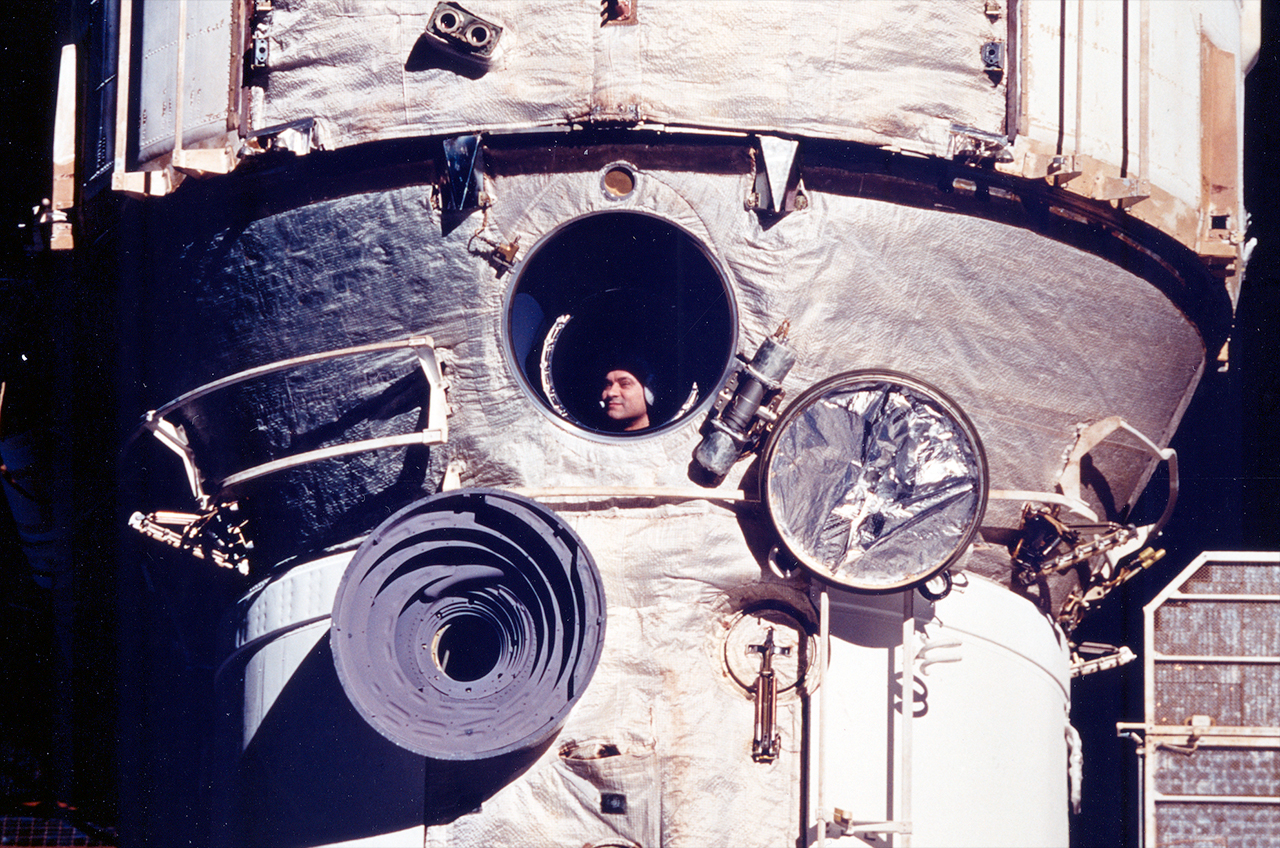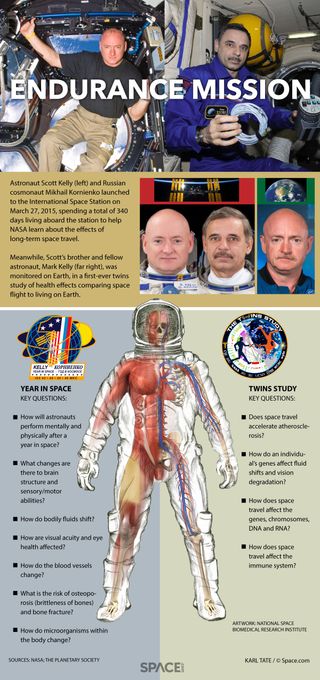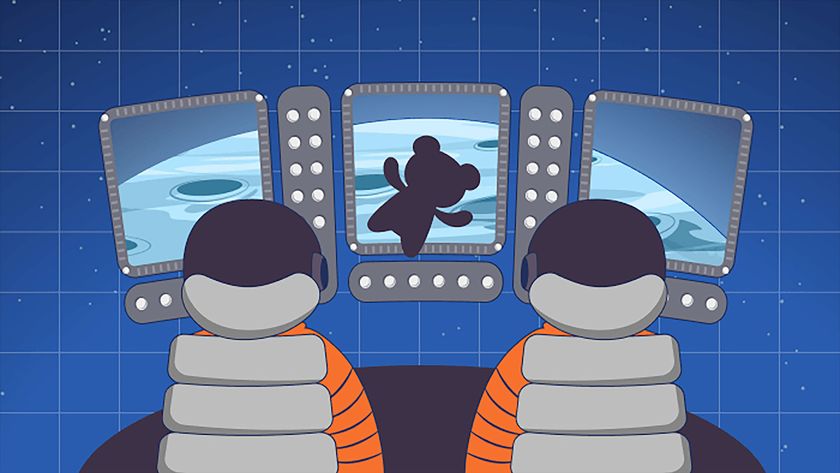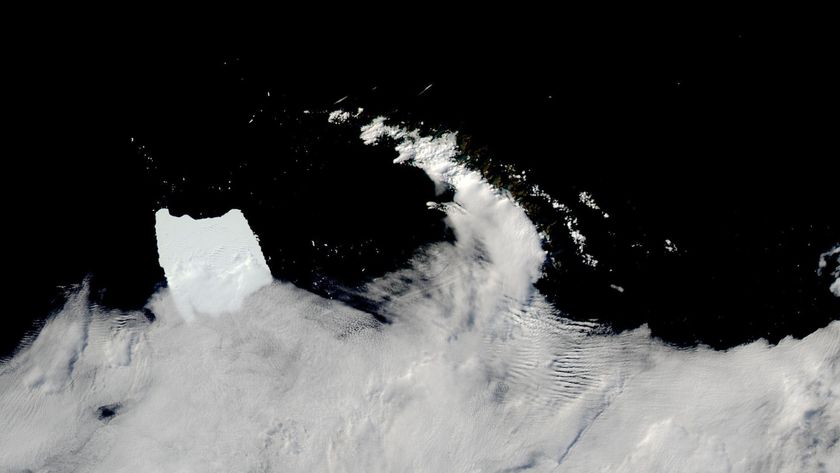One Year in Space: A History of Ultra-Long Missions Off Planet Earth

An American astronaut and Russian cosmonaut are set to make history as the first crewmembers to spend a year onboard the International Space Station, but the two are not the first to log 12 months off the planet.
NASA astronaut Scott Kelly and cosmonaut Mikhail Kornienko will lift off to the space station on Friday (March 27) to begin the yearlong expedition. Joining them on Russia's Soyuz TMA-16M spacecraft for the 6-hour trip to the orbiting outpost is cosmonaut Gennady Padalka, who will stay on the station for the more usual six months.
Padalka logged his own 365th day in orbit back in 2004 on what was just his second mission. Now set to fly on his fifth long-duration flight, he will become the new worldwide record holder for the most cumulative time in space when he completes his current mission, topping 900 days. [One-Year Space Station Mission: Full Coverage]

Twenty-two other cosmonauts and four NASA astronauts have to date accumulated 365 days or more over the course of two or more space missions.
Kelly and Kornienko have each already logged about 180 days in space; Kelly on three previous missions and Kornienko on one 6-month stay aboard the space station.
Kelly will become the first American to spend 12 consecutive months in space, setting a new American record for time in space. He will surpass both astronaut Michael Lopez-Alegria's 215 days on a single mission, set in 2007, and astronaut Mike Fincke's cumulative 382 days, which he accrued over three spaceflights.
There will be no similar records for Kornienko, though. He is now the fifth Russian cosmonaut to embark on a one-year mission.
Get the Space.com Newsletter
Breaking space news, the latest updates on rocket launches, skywatching events and more!
The first humans to complete a trip around the sun — while off the Earth — were Vladimir Titov and Musa Manarov, who as crewmembers on Russia's former Mir space station from December 1987 to December 1988, tallied a total of 365 days, 22 hours and 38 minutes orbiting the Earth.
Their record was broken eight years later by a former crewmate, Valery Polyakov. Living aboard Mir from January 1994 until March 1995, Polyakov set a record that still stands today for the single longest space mission: 438 days.
Unlike Titov, Manarov and Polyakov — and for that matter, Kelly and Kornienko, who knew they were embarking on a yearlong mission before they launched — the most recent cosmonaut to log 12 consecutive months in space learned the full duration of his mission only after he was already living aboard the space station Mir.
"I was prepared that my flight might turn out to be a little bit longer, but I never thought it would be twice as long," Sergei Avdeyev told a NASA interviewer. Avdeyev ended up spending 380 days in orbit as a result of a change in the length of another crewmember's stay.
The goal of Kelly's and Kornienko's mission, which is set to last 342 days, is to build on the experiences of Titov, Manarov, Polyakov and Avdeyev while they collect the data needed to support even longer missions to deep space, such as sending astronauts to Mars.
"The last long-term space mission ... brought major data for investigations and research about how humans will feel during long-duration flights into space," Kornienko said. "I hope our mission [provides] an opportunity for others who will follow in our footsteps."
Key to that will be the tools now available onboard the International Space Station to record his and Kelly's experience.
"Technology has developed significantly since the Russians had the last crewmembers spend that amount of time in space," Kelly said in a NASA preflight interview. "The types of imaging capability, between MRIs and CAT scans, ultrasound and probably all ways that we collect data, it has gotten better since this was done the last time."
"I suspect we're going to learn a lot about our physiology and how longer-duration space flights affects it, and hopefully ways to mitigate those effects," Kelly said.
Robert Z. Pearlman is a Space.com contributing writer and the editor of collectSPACE.com, a Space.com partner site and the leading space history-focused news publication. Follow collectSPACE.com on Facebook and on Twitter at @collectSPACE. Follow us @Spacedotcom, Facebook or Google+. Originally published on Space.com.
Join our Space Forums to keep talking space on the latest missions, night sky and more! And if you have a news tip, correction or comment, let us know at: community@space.com.

Robert Pearlman is a space historian, journalist and the founder and editor of collectSPACE.com, a daily news publication and community devoted to space history with a particular focus on how and where space exploration intersects with pop culture. Pearlman is also a contributing writer for Space.com and co-author of "Space Stations: The Art, Science, and Reality of Working in Space” published by Smithsonian Books in 2018.In 2009, he was inducted into the U.S. Space Camp Hall of Fame in Huntsville, Alabama. In 2021, he was honored by the American Astronautical Society with the Ordway Award for Sustained Excellence in Spaceflight History. In 2023, the National Space Club Florida Committee recognized Pearlman with the Kolcum News and Communications Award for excellence in telling the space story along the Space Coast and throughout the world.











